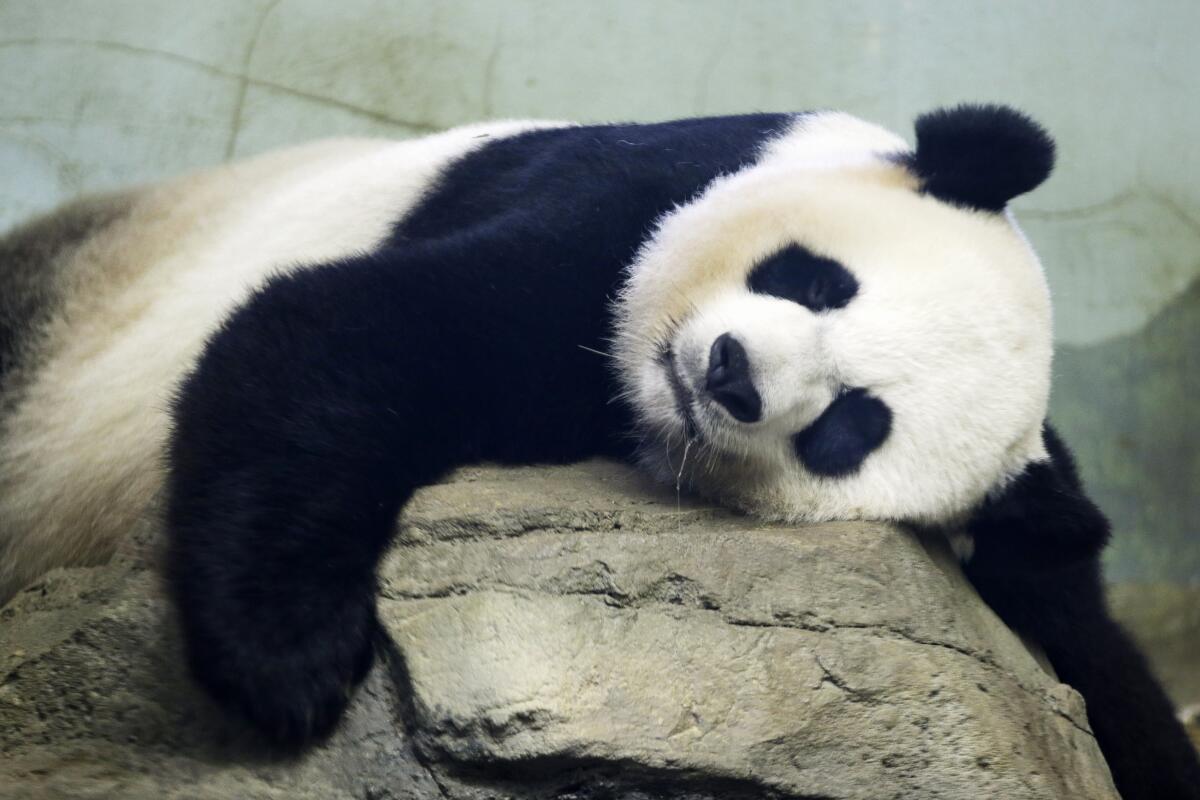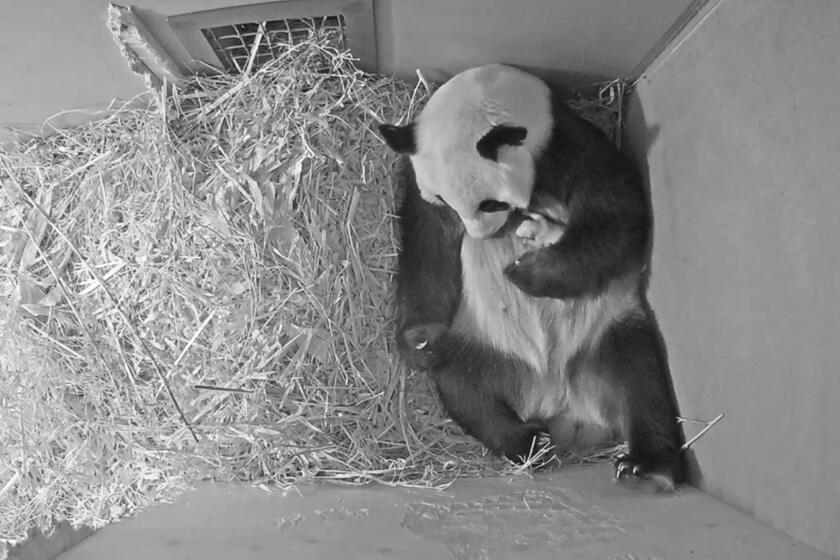‘She is absolutely pregnant’: Panda at National Zoo could give birth this week

- Share via
WASHINGTON — Zookeepers at Washington’s National Zoo are on excited baby watch after concluding that venerable giant panda matriarch Mei Xiang is pregnant and could give birth this week. It’s a welcome bit of good news amid a pandemic that kept the zoo shuttered for months.
“We need this! We totally need this joy,” said zoo spokeswoman Pamela Baker-Masson. “We are all in desperate need of these feel-goods.”
Although so-called “phantom pregnancies” are common with pandas and other large bears, Baker-Masson said an ultrasound scan revealed a “really strong-looking, fantastic fetus” that could be delivered this week.
“The image was great. She is absolutely pregnant. But things could still happen, just like in a human pregnancy,” Baker-Masson said.
The zoo posted a video from the ultrasound on Instagram. “Keep your paws crossed!” the zoo said, reporting that the fetus was “kicking and swimming in the amniotic fluid.”
The announcement of the pregnancy has already touched off a fresh round of panda-mania for one of the zoo’s feature attractions. Viewership on the zoo’s panda-cam has increased 800%.
It’s one panda in, two pandas out for zoos in the Netherlands and Canada, respectively, in good and bad animal news during the coronavirus crisis.
The zoo reopened on a limited basis July 24, with restrictions in place to keep the crowds down. All indoor exhibits, including the extremely popular panda house, have remained closed. Visitors can still view the outdoor panda enclosure, but Mei Xiang has mostly been staying indoors, creating a nest out of branches. She can still be viewed on the panda cam.
Panda births are inherently tricky, with stillbirths and miscarriages happening frequently. There is also a phenomenon called “resorption” whereby the fetus is unexpectedly absorbed back into the mother’s body. Baker-Masson said that is rare with a fetus this well-developed.
Another potential complication is the age of the mother. Mei Xiang, at 22, would be the oldest giant panda to successfully give birth in the United States. The oldest in the world to give birth, in China, was 23.
“Reproductively speaking, she is an older bear,” Baker-Masson said. “But she has been a great mother in the past.”
On the outside, giant pandas look like herbivores.
Mei Xiang has successfully given birth to three cubs: Tai Shan, Bao Bao and Bei Bei. All were transported to China at age 4, under the terms of the zoo’s agreement with the Chinese government.
Mei Xiang was impregnated via artificial insemination, a process that was laden with precautions because of the COVID-19 pandemic. The procedure was conducted shortly after the entire zoo shut down March 14.
Normally, zookeepers would have used a combination of stored frozen sperm and fresh semen extracted from male panda Tian Tian. In order to minimize the number of close-quarters medical procedures, zoo staff decided to skip the extraction and inseminate Mei only with defrosted semen from 2016.
If successful, the birth would be the first of its kind in the U.S. using only frozen panda sperm.
More to Read
Sign up for Essential California
The most important California stories and recommendations in your inbox every morning.
You may occasionally receive promotional content from the Los Angeles Times.











